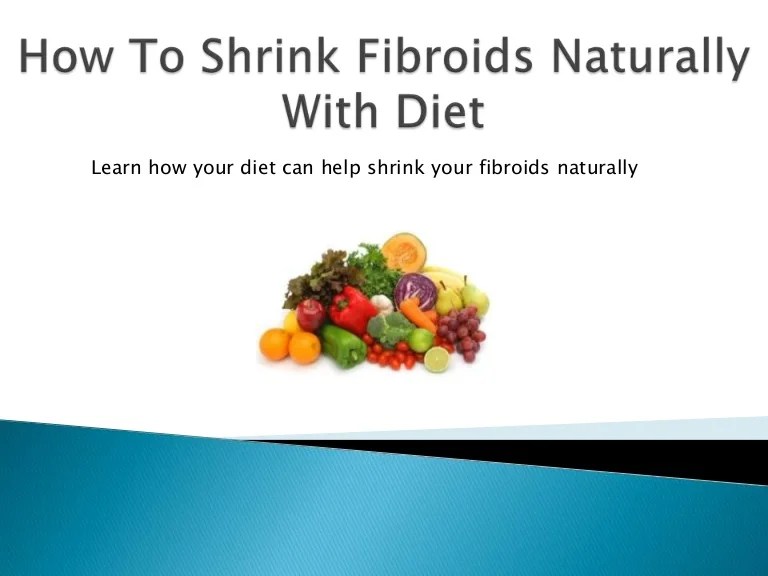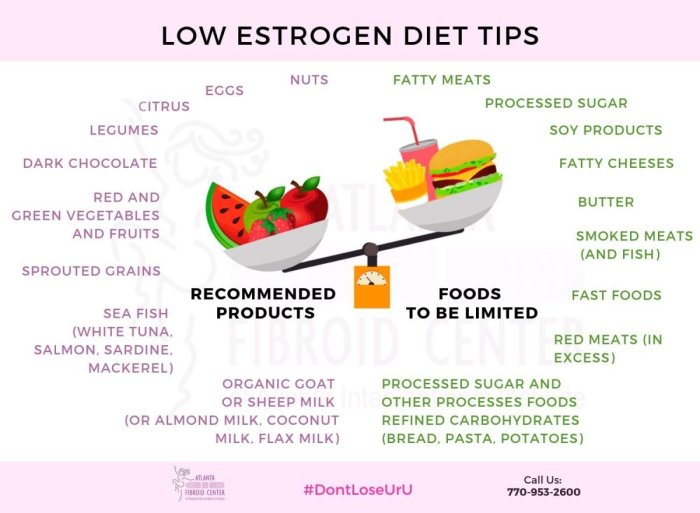Embark on a transformative journey to reduce fibroids naturally with our comprehensive guide, “How to Shrink Fibroids with Diet.” Discover the power of dietary modifications, specific foods, and lifestyle considerations to alleviate symptoms and improve overall well-being.
Delve into the science behind fibroid growth and the impact of diet on their size. Learn about the crucial role of dietary fiber and phytoestrogens in combating fibroids, and explore a curated list of foods rich in these essential nutrients.
Dietary Modifications

Dietary modifications play a significant role in managing fibroids. A well-balanced diet can help reduce fibroid growth and improve overall health.
Dietary Fiber
Dietary fiber is essential for maintaining a healthy digestive system and preventing constipation. It can also help reduce fibroid growth by binding to estrogen and preventing its absorption into the bloodstream. Good sources of dietary fiber include fruits, vegetables, whole grains, and legumes.
Phytoestrogens
Phytoestrogens are plant-based compounds that have estrogen-like effects. They can help reduce fibroid size by competing with estrogen for binding sites on cell receptors. Good sources of phytoestrogens include soybeans, flaxseeds, and lentils.
Foods Rich in Fiber and Phytoestrogens
- Fruits: apples, berries, bananas
- Vegetables: broccoli, cauliflower, carrots
- Whole grains: brown rice, quinoa, oats
- Legumes: beans, lentils, chickpeas
- Soybeans
- Flaxseeds
Specific Foods and Supplements
Incorporating specific foods and supplements into your diet may support fibroid shrinkage. Here’s an overview of the most commonly recommended options:
Specific Foods:
Adopting a vegetarian lifestyle can bring numerous health benefits, but it’s essential to ensure you’re consuming a balanced diet. For guidance on how to eat healthy as a vegetarian, check out this comprehensive guide. It covers everything from protein sources to nutrient-rich foods, empowering you to make informed choices and enjoy the benefits of a plant-based diet.
Green Leafy Vegetables
Green leafy vegetables like spinach, kale, and collard greens are rich in fiber, antioxidants, and vitamins, all of which have been linked to fibroid reduction.
Cruciferous Vegetables
Cruciferous vegetables such as broccoli, cauliflower, and cabbage contain compounds called indoles, which have been shown to inhibit fibroid growth.
Fruits
Fruits, particularly berries, are rich in antioxidants and anti-inflammatory compounds that may help reduce fibroid size.
Supplements:
Turmeric
Turmeric, a spice commonly used in Indian cuisine, contains curcumin, a potent anti-inflammatory compound that has been found to inhibit fibroid growth.
Ginger
Ginger is a natural anti-inflammatory and antioxidant that may help reduce fibroid pain and inflammation.
Green Tea Extract
Green tea extract is rich in epigallocatechin gallate (EGCG), an antioxidant that has been shown to inhibit fibroid growth and promote apoptosis (cell death).
Meal Planning
To effectively reduce fibroid size through dietary modifications, a well-structured meal plan is crucial. This plan should prioritize foods that have been scientifically proven to possess anti-fibroid properties.
To ensure a balanced and comprehensive approach, the meal plan should incorporate adequate amounts of fiber, phytoestrogens, and other essential nutrients. Here’s a sample meal plan and a table outlining the daily intake of these nutrients:
Sample Meal Plan, How to shrink fibroids with diet
- Breakfast:Oatmeal with berries and nuts
- Lunch:Grilled salmon salad with mixed greens, quinoa, and avocado
- Dinner:Lentil soup with whole-wheat bread
- Snacks:Fruits, vegetables, or yogurt
Nutrient Intake Table
| Nutrient | Daily Intake |
|---|---|
| Fiber | 25-30 grams |
| Phytoestrogens | 50-100 milligrams |
| Iron | 18 milligrams |
| Calcium | 1,000 milligrams |
| Vitamin D | 600 IU |
Meal Preparation and Portion Control Tips
- Cook meals at home to control ingredients and portion sizes.
- Use measuring cups and spoons to ensure accurate portioning.
- Choose lean protein sources like fish, chicken, and beans.
- Limit processed foods, sugary drinks, and unhealthy fats.
- Read food labels carefully to make informed choices.
Lifestyle Considerations

Adopting a healthy lifestyle plays a crucial role in managing fibroids. Maintaining a healthy weight, engaging in regular exercise, and managing stress can significantly impact fibroid growth and overall well-being.
Maintaining a Healthy Weight
Excess weight contributes to higher estrogen levels, which can stimulate fibroid growth. Losing weight, even a modest amount, can help reduce estrogen levels and potentially slow down fibroid growth.
Regular Exercise
Regular physical activity can help reduce inflammation and improve blood flow, which may benefit fibroid health. Exercise can also help maintain a healthy weight and reduce stress, both of which can positively impact fibroids.
Stress Management
Stress can trigger the release of hormones that can increase fibroid growth. Finding effective stress-reducing techniques, such as yoga, meditation, or spending time in nature, can help manage stress levels and potentially reduce fibroid size.
As a vegetarian, ensuring a balanced and nutritious diet is essential. A well-structured vegetarian diet can provide all the necessary nutrients for optimal health. By incorporating a variety of plant-based foods, you can enjoy a healthy and satisfying lifestyle. For more detailed guidance, check out this comprehensive guide on how to eat healthy as a vegetarian.
Cautions and Contraindications: How To Shrink Fibroids With Diet
Dietary modifications for fibroid shrinkage may have potential side effects or contraindications. It’s crucial to consult with a healthcare professional before making significant dietary changes, especially if you have any underlying health conditions or are taking medications.
Importance of Consulting a Healthcare Professional
Consulting a healthcare professional ensures that the dietary changes are safe and appropriate for your individual needs. They can assess your overall health, review your medical history, and provide personalized guidance based on your specific circumstances.
Final Summary

Remember, dietary changes should always be undertaken in consultation with a healthcare professional. Embrace the power of nutrition to manage fibroids, improve your quality of life, and achieve a healthier future.
Commonly Asked Questions
Can dietary changes alone eliminate fibroids completely?
While diet plays a significant role in managing fibroids, it’s essential to note that dietary changes alone may not completely eliminate them. However, incorporating these dietary modifications into a comprehensive treatment plan can support fibroid reduction and alleviate symptoms.
What are some potential side effects of dietary changes for fibroid shrinkage?
Dietary changes, such as increasing fiber intake, may cause temporary digestive discomfort, such as gas and bloating. It’s important to introduce dietary modifications gradually and consult with a healthcare professional if any adverse effects occur.